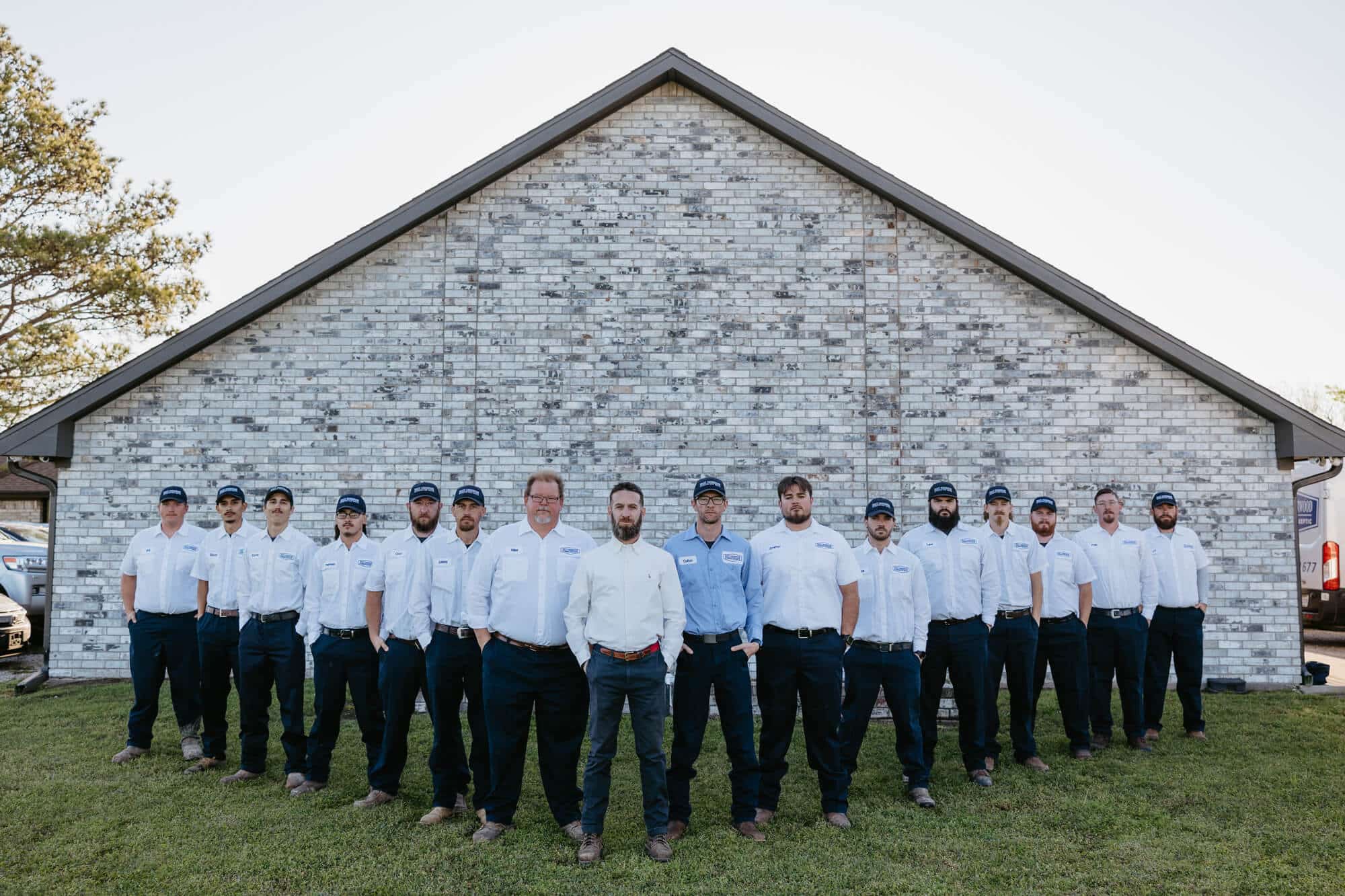When your toilet isn’t functioning properly, it can cause a whole host of issues. From water waste to unpleasant odors, a malfunctioning toilet can quickly become a major problem. Fortunately, with a little know-how, you can take control of your toilet repair and keep your bathroom running smoothly.
Whether you’re dealing with a running toilet or a leaky tank, we at Dusty Underwood will walk you through the steps to get your porcelain throne back in tip-top shape.
Signs That Your Toilet Needs Repair or Replacement
Recognizing the signs of a problem toilet is the first step in addressing the issue. Some common indicators that your toilet may need attention include:
- Constant running or flushing
- Leaks around the base or tank
- Slow or incomplete flushing
- Unusual noises, such as gurgling or whistling
- Cracks or damage to the tank or bowl
- Frequent clogs or backups
If you notice any of these issues, address them promptly to prevent further damage and potential water waste.
Tools & Materials Needed for Toilet Repair
Before you begin any toilet repair project, it’s important to have the right tools and materials on hand. Some essential items you may need include:
- Plunger
- Toilet auger or plumber’s snake
- Basin wrench
- Adjustable wrench
- Bucket
- Towels
- Toilet repair kit (including flapper, fill valve, and other replacement parts)
- Silicone sealant
- Plumber’s putty
Gathering these items beforehand will help create a smooth and efficient repair process.
Fixing Common Toilet Problems
Fixing a Running Toilet
One of the most common toilet problems is a running toilet, which can waste a significant amount of water and drive up your utility bills. Here’s a step-by-step guide to fixing a running toilet:
- Locate The Problem: Identify the source of the running water, which is typically either a faulty flapper or a malfunctioning fill valve.
- Turn Off The Water Supply: Locate the shut-off valve behind the toilet and turn it clockwise to shut off the water.
- Flush The Toilet To Empty The Tank: This will make accessing and working on the internal components easier.
- Remove The Tank Lid And Inspect The Flapper: Check for any cracks, wear, or improper seating. Replace the flapper if necessary.
- Adjust The Flapper Chain: Ensure the chain is the correct length and not too tight or too loose.
- Clean The Fill Valve: Remove any debris or mineral buildup that may be interfering with the valve’s operation.
- Replace The Fill Valve: If the existing fill valve is worn out, replace it with a new one.
- Adjust The Water Level: Set the water level to the appropriate mark on the tank wall.
- Turn The Water Supply Back On And Test The Repair: Flush the toilet several times to check that the running issue has been resolved.
How to Fix a Leaking Toilet Tank
Leaking from a toilet tank can be another common problem, leading to water waste and potential water damage. Here’s how to address a leaking toilet tank:
- Locate The Source Of The Leak: Inspect the tank for cracks, loose connections, or worn-out gaskets.
- Turn Off The Water Supply And Flush The Toilet: This will empty the tank and make it easier to work on.
- Remove The Tank Lid And Inspect The Components: Check the flapper, fill valve, and tank-to-bowl gasket for any signs of wear or damage.
- Replace The Necessary Parts: If the flapper or fill valve is faulty, replace them with new components. If the tank-to-bowl gasket is worn, replace it as well.
- Apply Plumber’s Putty Or Silicone Sealant: Use these materials to create a tight seal around any connections or areas that may be the source of the leak.
- Reassemble The Tank And Turn The Water Supply Back On: Flush the toilet to ensure the leak has stopped.
You can effectively stop a leaking toilet tank by addressing the root cause of the leak and replacing any worn-out parts.
How Long Do Toilets Last? Signs That It’s Time to Replace Your Toilet
Toilets are built for durability, but they don’t last forever. The average lifespan of a toilet is around 10-15 years, but factors like water quality, usage, and maintenance can affect its longevity. Some signs that it may be time to replace your toilet include:
- Frequent clogs or backups
- Cracks or damage to the tank or bowl
- Persistent leaks that cannot be repaired
- Outdated or inefficient flushing mechanism
- Discoloration or staining that cannot be cleaned
If your toilet has any of these issues, it may be time to consider a replacement. Upgrading to a new, high-efficiency toilet can not only improve your bathroom’s functionality but also save you money on water bills in the long run.
DIY Toilet Repair vs. Hiring a Professional Plumber in Bonham, TX
When it comes to toilet repair, you have two main options: tackling the job yourself or calling in a professional plumber. DIY toilet repair can be cost-effective, but it’s important to have the necessary skills and tools to complete the job. A professional plumber can provide the expertise and equipment to handle more complex issues.
If you need toilet repair in Bonham, TX, fast, look no further than the team at Dusty Underwood Plumbing! We have the knowledge and equipment to do the job efficiently and effectively. Contact us today to schedule a stress-free plumbing repair.
Expert Toilet Repair With Dusty Underwood Plumbing in Bonham, TX
Are toilet issues disrupting your daily routine? Dusty Underwood Plumbing & Septic in Bonham, TX, is your reliable solution! Our licensed plumbers have the expertise and modern equipment to effectively eradicate any toilet issue, from leaks to persistent clogs.
Don’t let minor problems escalate into major headaches—schedule expert toilet repair or installation services with us today. Call (903) 474-2658 for prompt, reliable assistance and bid farewell to your toilet troubles.

